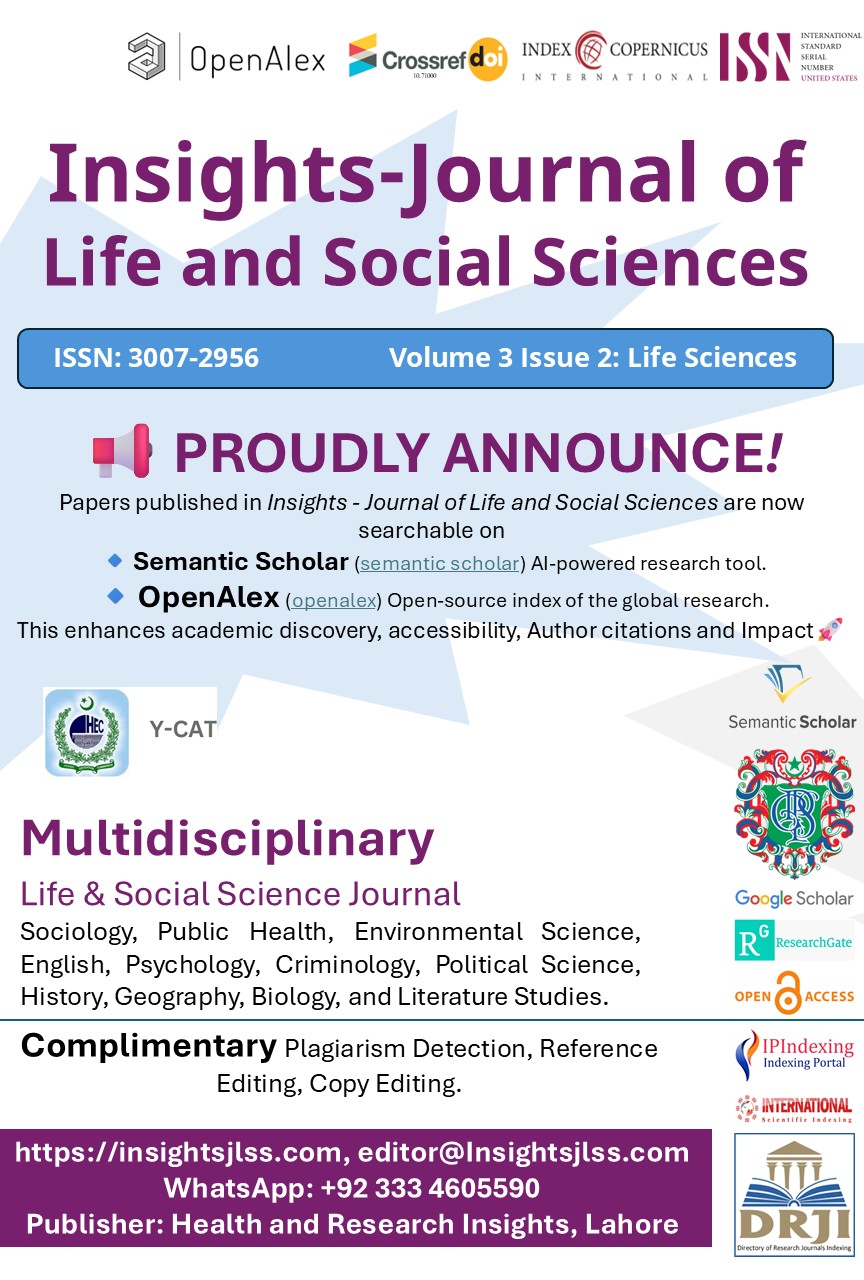PHYSICAL ACTIVITY STATUS AMONG HYPERTENSIVE PATIENTS WITH KNOWN DIABETES MELLITUS IN SINDH, PAKISTAN
Main Article Content
Abstract
Background: Diabetes mellitus and hypertension are among the most prevalent non-communicable diseases, often coexisting and significantly increasing cardiovascular risk. Physical inactivity is a modifiable risk factor that exacerbates both conditions, yet adherence to physical activity recommendations remains suboptimal in Pakistan. Urbanization and lifestyle shifts have led to increased sedentary behavior, particularly in Sindh, contributing to worsening health outcomes. Understanding the association between physical activity levels and hypertension severity among diabetic patients is essential for developing effective public health strategies.
Objective: This study aims to assess the physical activity status of hypertensive patients with known diabetes mellitus in Sindh, Pakistan, and examine its association with hypertension severity.
Methods: A cross-sectional study was conducted across six cities in Sindh from April to October 2023. A total of 381 participants diagnosed with both diabetes mellitus and hypertension were recruited through convenience sampling from healthcare centers. Data on demographics, physical activity levels, and hypertension severity were collected through structured questionnaires and blood pressure measurements. Physical activity was classified into inactive (no regular activity), moderate (150–300 minutes per week), and high (>300 minutes per week) based on WHO guidelines. Statistical analysis was performed using SPSS version 21, with associations determined at a significance level of p<0.05.
Results: Physical inactivity was prevalent among 65.15% of participants, with 53.7% of them having Grade 2 hypertension. In contrast, only 4.2% of highly active individuals exhibited severe hypertension. Moderate activity was associated with a lower prevalence of Grade 2 hypertension (9.4%). Obesity was significantly correlated with hypertension severity, as 68.5% of obese participants had Grade 2 hypertension compared to 8.2% of normal-weight individuals. Urban participants had lower physical activity levels and a higher prevalence of hypertension than rural residents. Poor medication adherence was also linked to increased hypertension severity, with 65.8% of non-adherent participants classified as having Grade 2 hypertension.
Conclusion: Physical inactivity strongly correlates with hypertension severity among diabetic patients. The findings emphasize the urgent need for structured physical activity programs and lifestyle interventions to mitigate cardiovascular risks in this high-risk population. Public health policies should prioritize physical activity promotion, weight management, and patient education to improve long-term health outcomes.
Article Details

This work is licensed under a Creative Commons Attribution-NonCommercial-NoDerivatives 4.0 International License.
